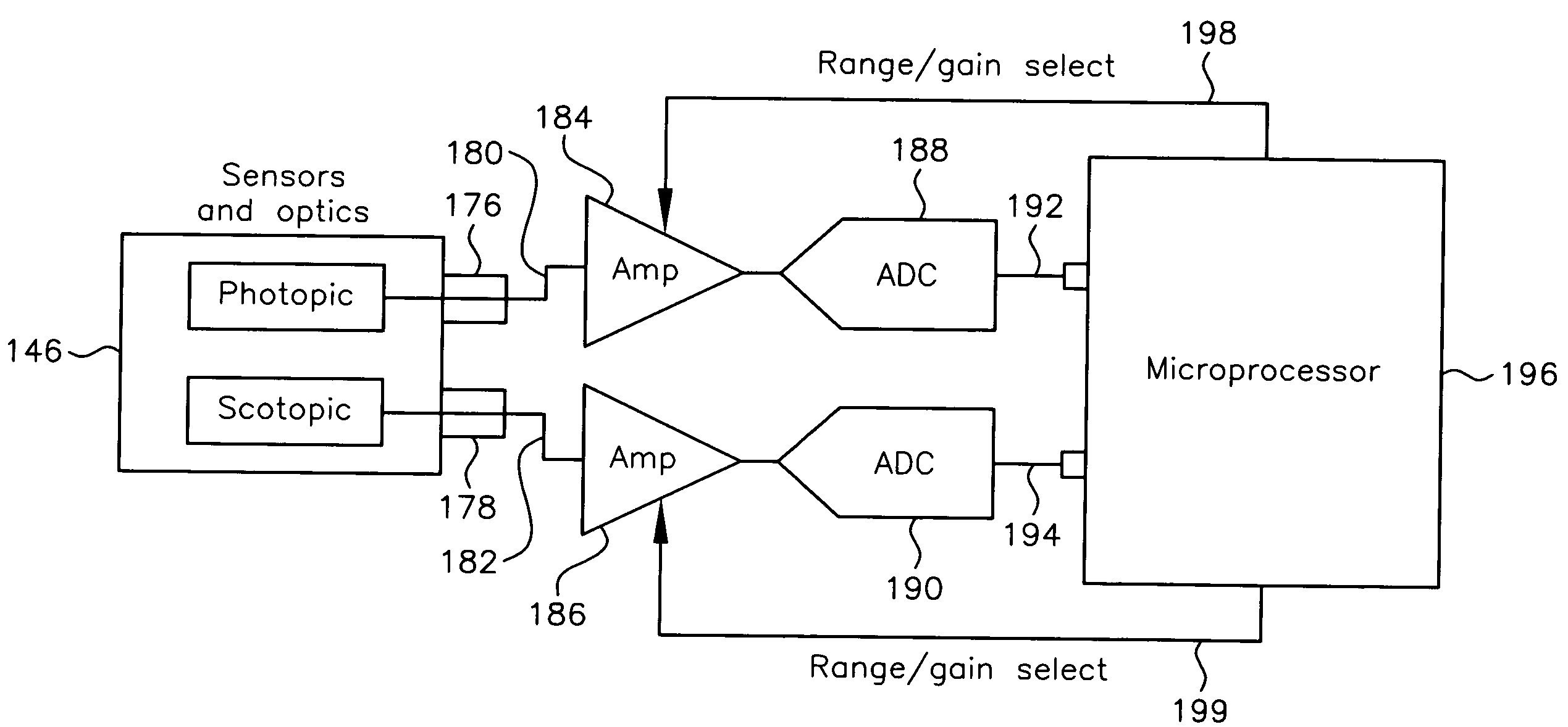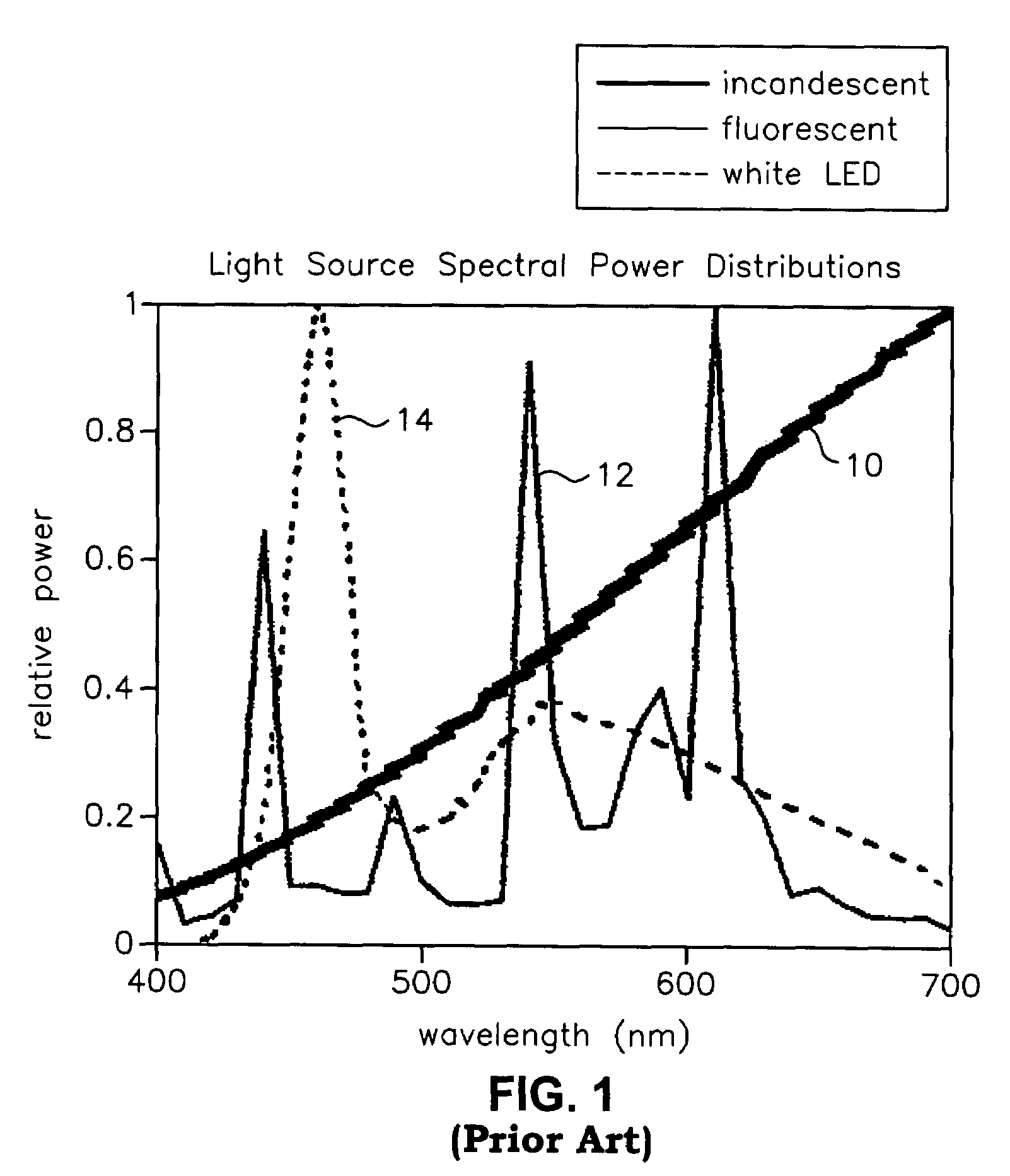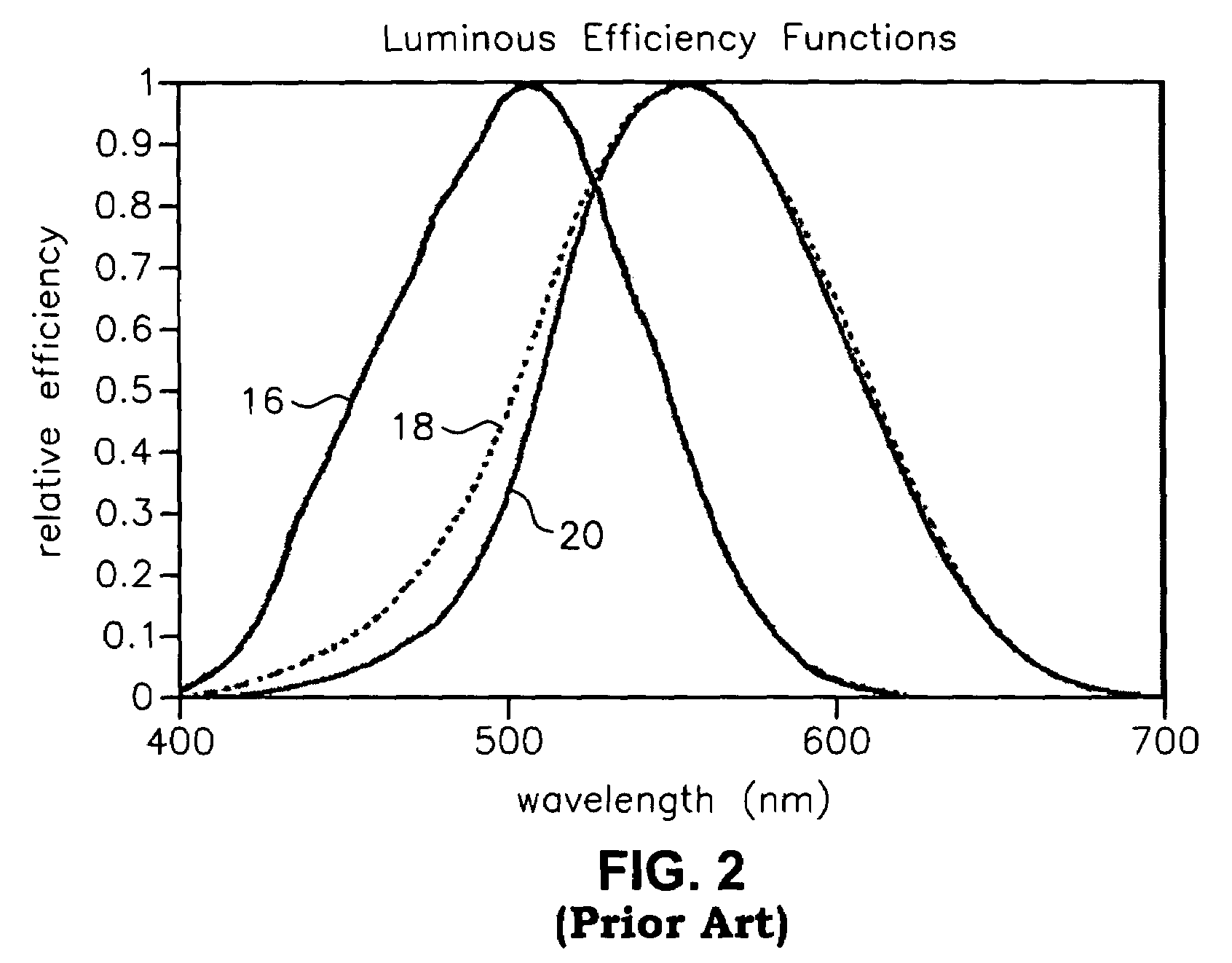Retinal flux density meter and method of use
a flux density and meter technology, applied in the field of illumination meters, can solve the problems of inability to readily accept illuminance measurements, inability to accurately measure radiometric instruments, and expensive and impractical radiometric instruments
- Summary
- Abstract
- Description
- Claims
- Application Information
AI Technical Summary
Problems solved by technology
Method used
Image
Examples
Embodiment Construction
[0077]The invention described below is a meter that approximates retinal flux density. That is, it approximates the density of light falling on the retina of an eye. In an exemplary embodiment, the meter may be made small enough to be easily portable.
[0078]A schematic diagram of retinal flux density (RFD) meter 146 is shown in FIG. 11A. The RFD meter 146 shown in FIG. 11A includes a cylindrical housing 148, a cylindrical baffle 150, a lens 152, a decentered aperture 154, an optical diffuser 160, a beam splitter 161, a photopic filter 169, a scotopic filter 162, and two silicon photodiodes or other photocells 164, 170.
[0079]Photopic filter 169 and scotopic filter 162 may be coupled to their own photocells 170 and 164, respectively. In an exemplary embodiment, photocell 164 may be behind filter 162 and photocell 170 may be behind filter 169. In an alternative embodiment, photocells may be developed that have the same response curves as those provided by filters 162 and 169. In that al...
PUM
 Login to View More
Login to View More Abstract
Description
Claims
Application Information
 Login to View More
Login to View More - R&D
- Intellectual Property
- Life Sciences
- Materials
- Tech Scout
- Unparalleled Data Quality
- Higher Quality Content
- 60% Fewer Hallucinations
Browse by: Latest US Patents, China's latest patents, Technical Efficacy Thesaurus, Application Domain, Technology Topic, Popular Technical Reports.
© 2025 PatSnap. All rights reserved.Legal|Privacy policy|Modern Slavery Act Transparency Statement|Sitemap|About US| Contact US: help@patsnap.com



